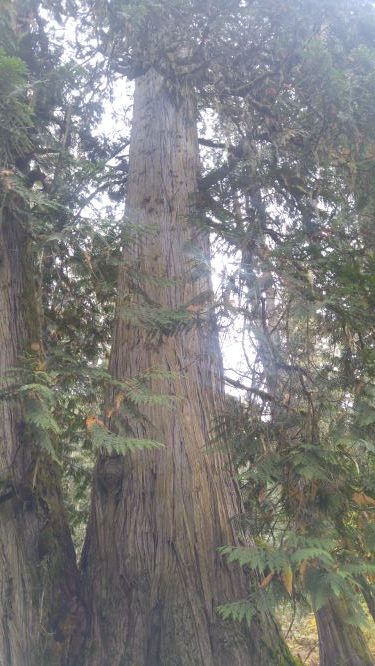Dr. Björk took us along on a fascinating virtual tour of the Robson Valley on September 14th. This engaging presentation provided a great bookend to the first full week of class for this new Masters student. I wasn’t aware of the extent of fascinating work that he was undertaking for the Robson Valley.
A lot of new information was presented by an energetic and inspiring speaker. For example, in addition to limestone providing a valuable and unique substrate, metalliferous rock also provides a unique substrate and potential location for rare organisms. When hunting for rare species, waterfall mist zones also provide unique locations for adding species to your species list. If you’re like me, you may have noticed this in your wanderings and time in the woods but not considered why. Dr. Björk described the unique characteristics of these sites such as their permanently cool nature, good ventilation, permanent opening in the canopy, and availability of moisture and nutrients from the spray.
I enjoyed Dr. Björk’s tour of the different ecosystems and landforms of the Robson Valley. The combination of photos and verbal descriptions was a very effective method to draw people into understanding the context of the diversity of the region. The presentation also provided a great overview of lichens and the diversity of lichen forms. Dr. Björk did a good job of not overwhelming the audience with technical or scientific terms. When he did bring include technical terms, he quickly and succinctly defined them for the audience (i.e. caliciod, siliceous, basidiolichens).
Dr. Björk’s description and application of the “controlled intuitive wander” was fascinating. I’ve often been curious about rare plant surveys. I’ve wondered how one can be certain that they have effectively and comprehensively studied an area for rare plants, since the plants are indeed rare! The strategy of first assessing the matrix and then moving on to strategically sample locations that are known to be more likely to harbour unique species makes sense. This could be a useful approach for myself to explore the landscape that I will be studying. The talk also provided a great refresher on lichens which will be helpful.
The question period provided Dr. Björk the opportunity to discuss a variety of interesting topics related to lichens, diversity and human impact. I appreciated the discussion and comparison of impacts of glacial refugia and glaciation itself on post-glaciation community diversity. To have the opportunity to put these impacts into context with real world examples was helpful. One question I would have posed had I had an opportunity was to ask about the “gold dust” lichens that are found on tree stems. I recalling hearing that this lichen is often associated with old forests. However, I see these lichens on younger stems in forests with some disturbance history. I’m interested to know what these lichens tell us about the conditions of the forest in which they are found.
Overall an entertaining and informative ecological tour of the Robson Valley.


Recent Comments